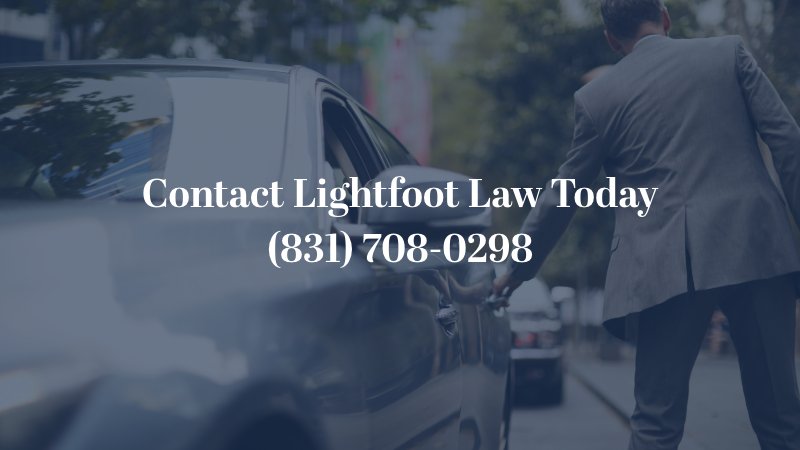Rideshare services like Uber and Lyft have significantly transformed urban mobility, providing users an efficient method to move around cities. However, as with any mode of transportation, accidents are an unfortunate reality. In Washington D.C., where ridesharing is particularly prevalent amidst high vehicular and foot traffic areas, the possibility for such incidents remains high.
Therefore, whether you’re a driver or passenger involved in a ridesharing vehicle accident, understanding how to accurately report it is a crucial first step in helping you get the justice and compensation you need to appropriately heal.
Immediate Steps To Take After an Uber or Lyft Accident
Immediately after a rideshare accident, whether you’re in the Uber/Lyft or another vehicle involved, there are some key steps to prioritize:
Ensure Safety
Your immediate concern must be safety. Check yourself and any other passengers for injuries. If necessary, immediately call 911 for medical help, even if injuries seem minor initially since adrenaline can keep pain down initially. Additionally, when possible to do without imposing extra risk, try moving your car away from traffic into a safer area if you were a driver involved in an accident with an Uber or Lyft.
If you were in an Uber or Lyft as a passenger, make sure you’re out of the car and safely out of the way of oncoming traffic.
Exchange Your Information With The Driver
Just like any motor vehicle accident scene, exchanging information is fundamental regardless of who’s at fault and whether you’re a passenger in the Uber or Lyft or another vehicle involved in the accident. Essential details include:
- Driver’s full name
- Contact number and email address
- Insurance company info and policy number
- Vehicle make and model
- License plate number
Remember to also collect info from other passengers if applicable or any witnesses present at the scene. Having additional parties to corroborate your version of events can help build a stronger case later on.
Take Photos if Possible
Try to capture clear snapshots of the accident scene if it’s feasible and safe. Highlight damage done to involved vehicles, visible bodily injuries suffered by you or anyone else, and notable environmental factors of the accident like weather and road conditions, traffic signals or signs, and anything else that will give an insurance company or court a better idea of how the accident took place.
Don’t Admit Fault
In the immediate aftermath of an accident, it’s normal for emotions to run high, and it can be tempting to apologize or accept blame. However, premature admissions could end up working against you and jeopardize your claim later on.
Even something as seemingly innocuous as an apology to someone who was injured in the accident could be misconstrued as you taking responsibility for the accident. It’s best not to say anything that could lead someone to believe you’re admitting fault.
While it’s obviously important cooperating with law enforcement at the scene while they compile their reports, there’s no need to give them any information other than your name and contact information, and a brief overview of what happened. Do this without narrating and adding an opinion to your statement.
Contact A Washington D.C Rideshare Accident Attorney Today
Reaching out to a Washington D.C rideshare accident lawyer as soon as you can post-incident is a good idea. Personal injury law surrounding rideshare services like Uber or Lyft can be complex and can differ in certain respects from typical automobile accident cases.
Having counsel experienced in such matters will guide you through the legal complexities, ensuring that everything is accurately documented and submitted. Their expertise improves your chances of receiving the necessary compensation to aid your recovery.
Report Accident to Uber/Lyft
It’s crucial that you promptly report the incident directly through the relevant rideshare app. Both Uber and Lyft have specific mechanisms within their apps for this express purpose.
Fill out all required info there and if the app permits, upload accident scene photos captured earlier along with a detailed account of the event. While quick reporting is essential, make sure you speak with a personal injury lawyer first to ensure you take the right steps to report the accident.
Keep Track of All Correspondence
Maintaining a record of all correspondence between you and Uber, Lyft, or any insurance company is essential as it can serve as proof of your communication and help protect your rights. The correspondence can include emails, chat transcripts, phone call recordings, letters, etc.
In case of any disputes or legal action, this correspondence can be used as evidence, providing a clear picture of your efforts, responses from the other parties involved, and any inconsistencies or misconduct on their part.
The Challenges of Uber and Lyft Accident Claims
Now that you understand the basics of what to do to report an Uber or Lyft accident, it’s helpful to understand why these cases can be more difficult than a regular motor vehicle accident.
Insurance Complications
Unlike typical car accidents, in rideshare incidents, multiple insurance policies could come into play. This can involve your personal auto insurance, the other driver’s policy, and potentially the policy from Uber or Lyft.
Liability Disputes
The most prominent issue is often determining who’s at fault for the accident. Is it the rideshare driver, another motorist involved, or perhaps an element outside anyone’s control? Identifying responsibility can dictate which insurance carrier will ultimately handle your claim.
Ridesharing services classify drivers not as employees but independent contractors. This distinction allows companies to deny liability under some circumstances because drivers aren’t considered direct agents of the company itself.
Reporting an Uber or Lyft accident in Washington D.C. involves a sequence of steps that are critical for ensuring the safety of all parties involved. If you need help, consider the steps above and always reach out to an experienced personal injury lawyer. By following these steps, you can help to streamline the process and protect your rights.
Contact us today to schedule a free consultation.
